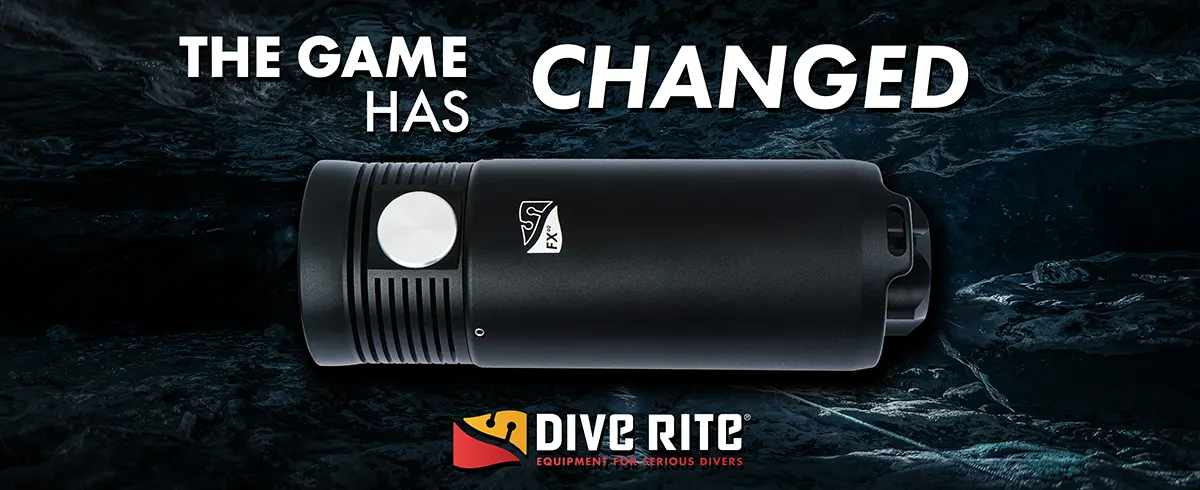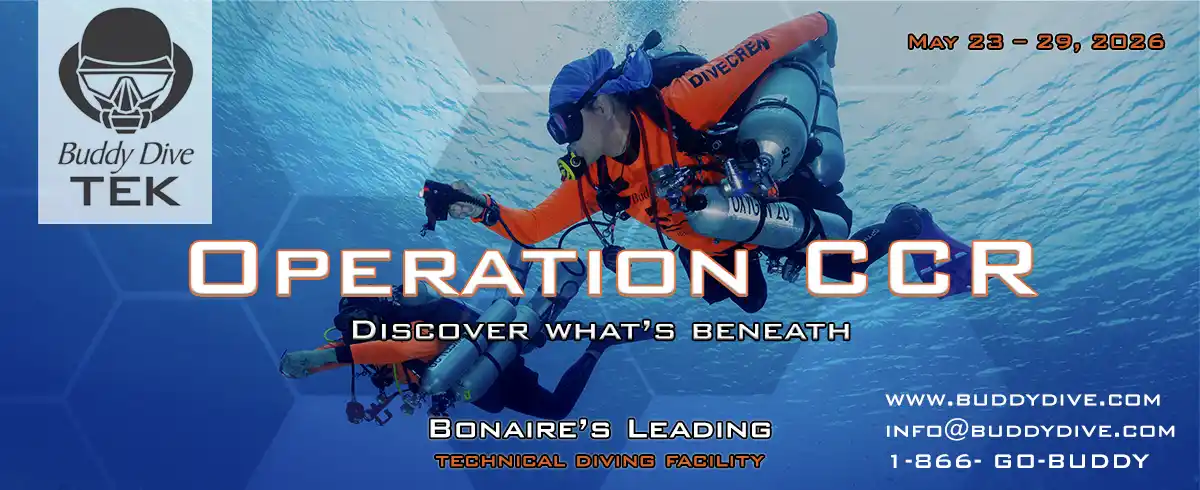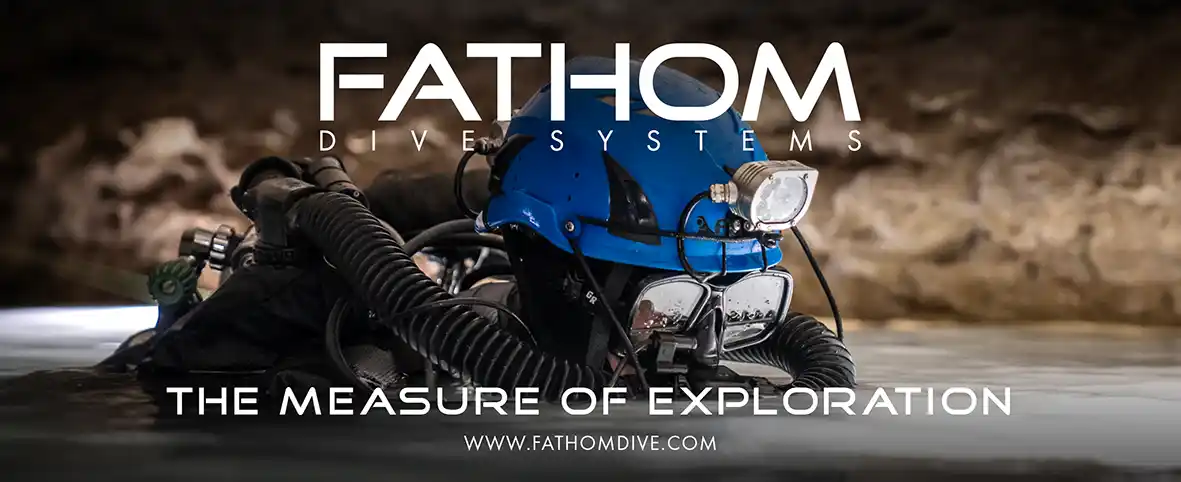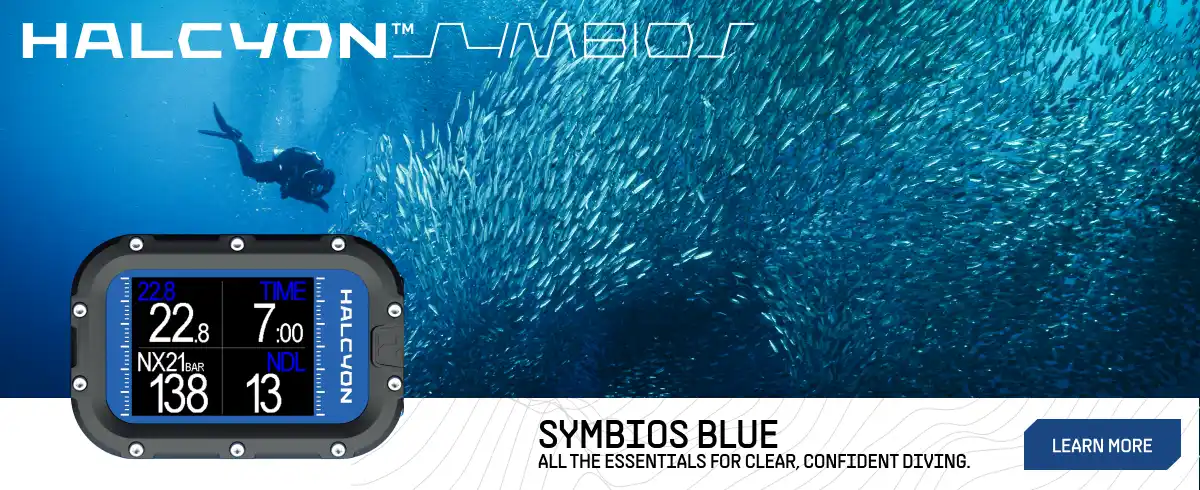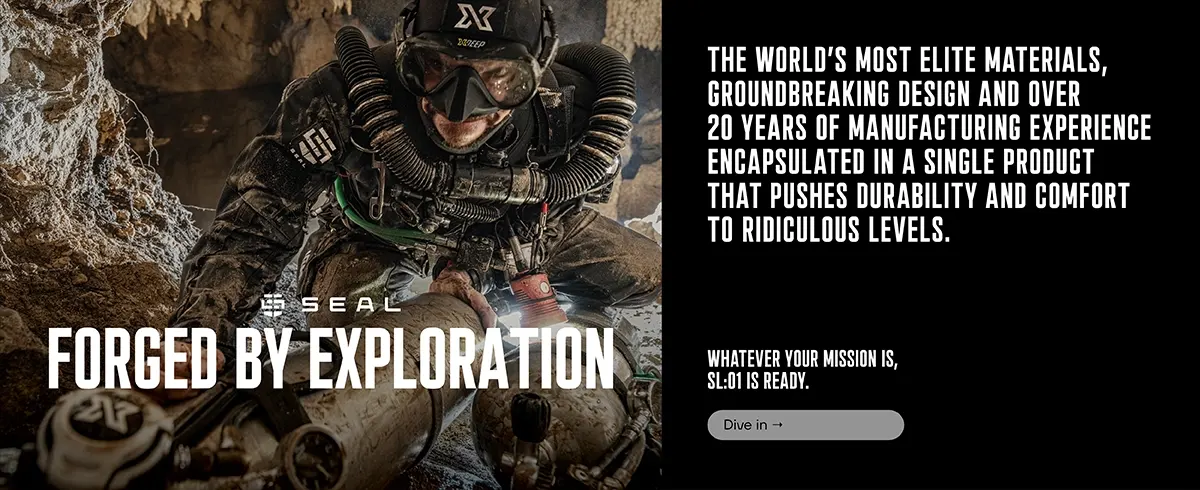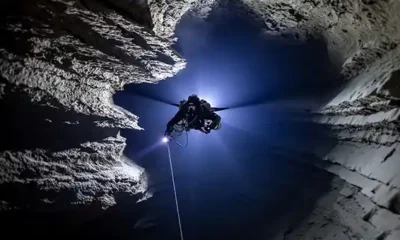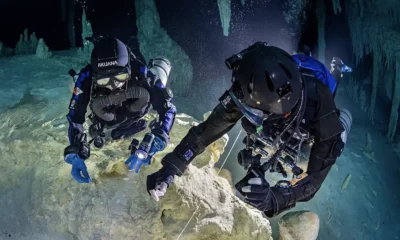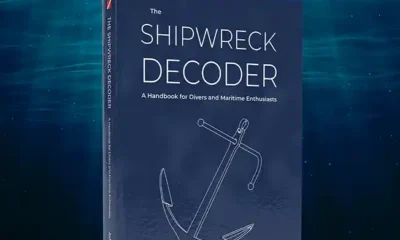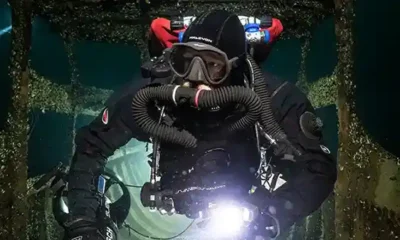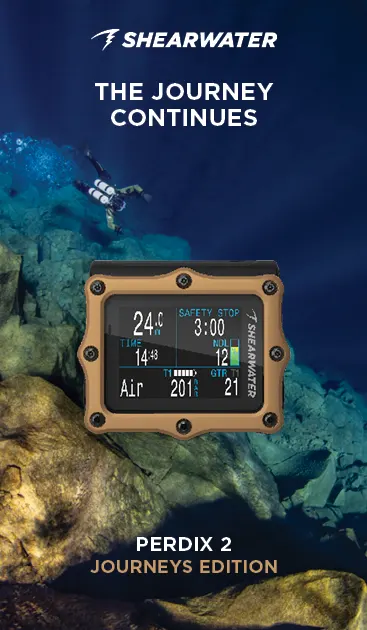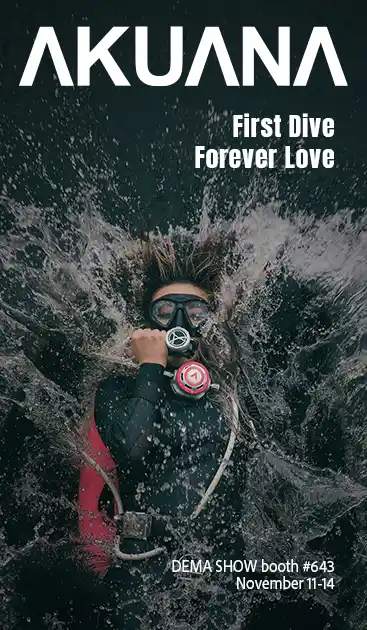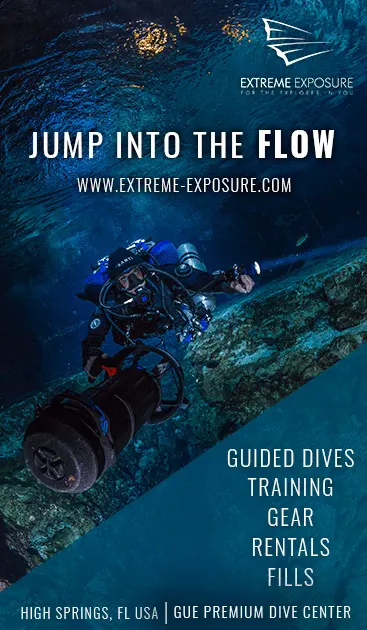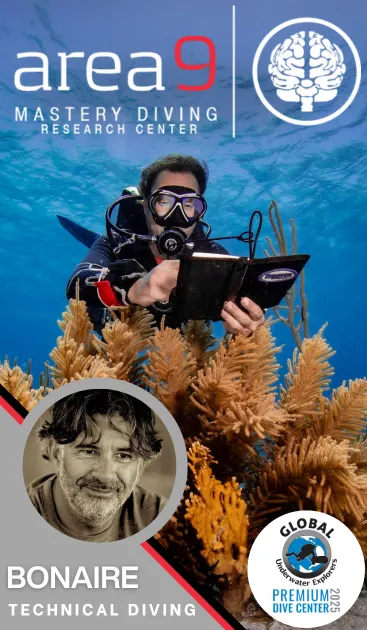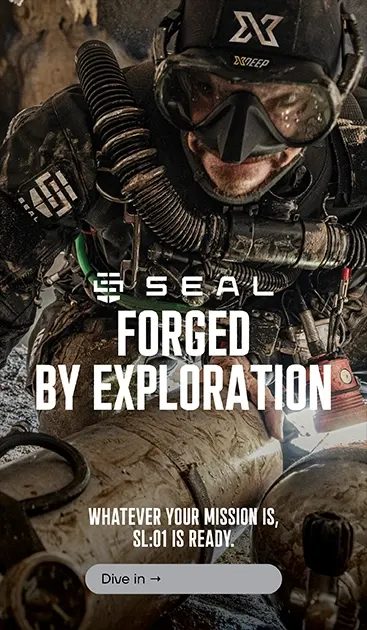News
Pandora’s Box of (de)Lights
The humble backup light is an essential part of any explorer’s kit configuration but is often overlooked. Could it be time for a bit of innovation? Jason Brown takes a look at a new model with a few tricks up its sleeve.
Text and images by Jason Brown, bardophotographic.co.uk

“Keep it simple, stupid” (the KISS method) has been the guiding principle behind much of the dive gear we’ve come to know and rely on. Pioneered by US Navy boffins back in the swinging sixties, the KISS system states that most things in life work best when we don’t overcomplicate them. You certainly can’t argue with the logic: The simpler something is, the less likely it is to fail, right?
It’s fair to say that ‘keeping things simple’ has served us well over the years. It’s acted as the cornerstone of much of the equipment and configurations we now take for granted. From the wing, backplate, and harness configuration on our backs (thanks Bill) to the design of the humble Jetfin, much of the kit we rely on to bring us safely ‘home to mama’ represents the very embodiment of the KISS principle—clean and minimalist with the design and functionality of every component thought through to a level of obsessiveness usually deserving of a strait jacket.
Some would argue that the KISS principle has led to a stagnation of innovation in certain product types. Backup lights are, perhaps, a good case in point. Having gone through cave training, I can attest to deeply entrenched dogma that remains amongst many within this risk-aware sector of the diving community. Maybe this isn’t necessarily a bad thing—the adage “If it ain’t broke, don’t fix it.” certainly holds water when the kit you’re using is mission critical. After all, cave diving offers more than its fair share of exciting opportunities to shuffle yourself off this mortal coil should things ever go wrong.

Back when I took my first cave class, we were taught that the best backup light was the simplest backup light:a no-thrills, ‘twist-activated’ design, robust construction, a focused under-driven bulb, and good old dependable non-rechargeable C (LR14) dry cell batteries offered long burn times. Even today, there are plenty of divers who will swear that using rechargeable batteries within a backup light is akin to leaving your safety spools in the back of your truck. It just isn’t done. When push comes to shove, you need to know that your backup lights won’t fail you. Dry cell batteries, they claim, offer the reassurance of a predictable lifespan and decay; they’ll fade slowly rather than going from bright to dead within minutes.
The poor reputation of rechargeable batteries was certainly justified back in the day. NiCD battery technology was notoriously bad at self-discharging quickly, and then there was the dreaded ‘memory effect’ to deal with each time you stuck them on charge. NiMH had similar issues with self-discharge, but these have thankfully been replaced by stable lithium-ion batteries. Their development has certainly mitigated the shortcomings of older rechargeable battery types. Li-ion batteries are now far more reliable and—more importantly—predictable. It’s this predictability that has made them a popular choice in modern exploration-grade primary lights like the Halcyon Focus and Flare series. They also drive the electronics within our rebreathers, so surely it’s a bit of a stretch to claim that they’re not suitable for life support equipment.

Korean light manufacturer Pandora Lab has designed a backup light with some innovative features that deserve to be examined. Their new K series lights offer some headline features without sacrificing the all-important KISS mantra in key areas. Their efforts to reassess all those long-held preconceptions of what makes a great backup light have not gone unnoticed.
So who is Pandora Lab? Chances are they’re not a brand that most will be familiar with, but they’ve built a solid reputation for their mold-breaking thinking. Some divers will recognize the Pandora Lab name through one of their more unassuming products: the Pandora Tool. This nifty little widget replaces a toolbox full of screw rivers, Allen wrenches, and c-spanners with a pocket-sized ‘does it all’ tool that fits perfectly in a set of wetnotes. Think of it as the Swiss Army Knife of dive tools… There’s even a bottle opener in there!
Pandora’s latest innovation is the K series, a range of dive lights that include two models: the K1 Mini and the K1 Rescue. Like the rest of the K series, the Mini and Rescue are modular in design with interchangeable heads and the option of easy conversion into full blown primaries complete with umbilical cables (either straight or 90 degrees for you sidemount types) and an obligatory Goodman handle. Modularity isn’t something that you’d expect to see in a backup light, so this ‘outside of the box’ thinking is an interesting innovation in itself. It’s not the headliner—there’s plenty of other good stuff to come from these innocuous little lights.

Unboxing either of the two K1 models on test, the first thing that struck me about them was their build quality. Sporting a tactical look and feel with a contoured body pattern similar to the classic Halcyon Scout lights, both models provide a reassuringly tactile grip even in bulky dry gloves. The black stealth look is broken up by a stylish red ring around the neck of the light head (which adds a nice flourish to the design). Like most backup lights, the base of both models features a milled attachment point for a bolt snap. How you attach a bolt snap is up to you—for most, an ‘old skool’ length of cave line does the trick nicely.
Both lights are made from two primary materials: The main body is machined from a solid piece of Delrin while the light head is made from milled aluminium. These materials offer a depth rating of 200 m/656 ft—more than enough for most divers, I suspect. In addition, the lights feature an integrated metal heat sink sleeve within the Delrin body which surrounds the battery compartment. As well as completing the electrical circuit, this feature (first seen in the Heser backup lights popular in Europe) has a fringe benefit. It uses the heat generated by the LED head to maintain an optimal operating temperature around the battery via thermal conduction. Battery capacity is temperature-dependent and can drop in low water temperatures, and this appears to be Pandora’s response.

Without doubt, the K1’s keynote innovation is the sealed head design. The use of LED drivers within backup lights is nothing new, but Pandora’s innovative design offers something that anyone who has ever flooded a backup light will appreciate: a sealed water-resistant head. While some light manufacturers focus solely on reducing the likelihood of a flood using multiple o-ring seals and extended threads, Pandora has created a light head that features all the same sealing but with a unique head design that can survive a full flood.
Should the unthinkable occur, all is not lost; you can restore the light to its original condition by simply rinsing the separated head and body in fresh water and then leaving them both to dry thoroughly. Sure, your battery will probably be toast, but your backup light will live to see another day. Of course, the best strategy is to not flood your light in the first place, so it’s reassuring to see that the K1 lights are protected by a double o-ring seal. Further ensuring the water-tight integrity of the lights, Pandora has resisted the urge to overcomplicate the design by sticking with time-honoured twist activation.
The K1 series is powered by rechargeable Li-ion cells that provide generous burn times across the range. The smaller of the two models (the K1 Mini) uses a compact 3.7v 2000mAh 26350 Li-ion battery offering a good 150 minutes (2.5 hours) of burn time. The larger K1 Rescue model, on the other hand, uses a higher capacity 3.7v 5200mAh 26650 Li-ion battery which delivers a generous 300 minutes (5 hours) of burn time. Both models are supplied with a lightweight USB-powered charger. Replacement batteries seem easy enough to source with widespread availability online. Unlike AA and C batteries, though, it’s unlikely you’ll find them in your local grocery store, so I’d be inclined to buy a spare set if you don’t have time to wait for an Amazon delivery.

While most backup lights limit brightness to around 300-400 lumens—to deliver a good balance between burn time while still delivering enough light to safely operate in a low (or zero) light environment—the K1 lights manage to deliver respectable burn times but with much higher output. Encapsulated within the sealed head is a single CREE LED emitter that Pandora claims will output 1400 lumens of light focused into an 8-9 degree beam with a 5600k (daylight) color temperature. The built-in focusing lens produces a tightly focused bright hot spot with a dimmer umbrella-shaped halo.
Finally, we come to what is perhaps Pandora’s most unusual innovation: They’ve added a cleverly hidden sealed compartment in the base of the torch filled with sea safety marker dye (or, as Pandora calls it, SMP, short for Survival Marker Paint). As anyone who has ever dived off a boat in tidal areas will know, the potential to be lost at sea is always there. While we can mitigate that risk using effective ascent protocols, surface marker buoys, an understanding of local currents, and a half-decent skipper, being prepared for the worst-case scenario is no bad thing, right? If the proverbial stuff ever did hit the fan, that little cap-full of sea safety marker dye could just save your life!


Image courtesy of Jamie Trumper.
The theory is simple enough. In the event of being lost at sea, you simply unscrew the cap on the base of the torch and release the marker dye into the surrounding water. The effect is quite spectacular—even the small amount of powder held within the base of the K1 Rescue reacts rapidly with the surrounding water to produce a highly visible green fluorescent ‘slick’ which could potentially be spotted by a search vessel or SAR helicopter from a long distance. I tested just the tiniest amount of this powder in a large container of water and was shocked by just how strong the effect was. I’d strongly recommend not trying it out ‘just for kicks’ in open water as you’d likely trigger a full-on rescue response. While the effect may be dramatic, the good news is that the dye’s effect on the environment is considerably less so: Pandora assures that it’s both harmless to the environment and non-toxic.
At any other time, it would be hard to get excited by what is seemingly a relatively ordinary device. It’s just a light, right? But, the Pandora Lab K1 series in both ‘Rescue’ and ‘Mini’ form are far from ordinary. Considering this is Pandora’s inaugural foray into the lighting market, they’ve clearly done their homework. The result is a pair of lights that deliver the solid and robust performance and build quality you’d expect from a premium backup light but with the addition of some genuinely headline-grabbing features: The sealed head design, in particular, is a real game changer. he Pandora Lab K1 lights are refreshing entries that offer genuine innovation and delivers solid design and performance—all while maintaining the all-important KISS mantra.

An experienced trimix rebreather and cave diver, Jason Brown is an accomplished commercial and underwater photographer whose work has graced the pages—and covers—of numerous magazines across the globe. An experienced writer, with over 30 years of experience writing engaging features for a diverse range of publications, Jason now focuses his writing and photographic talents on his life aquatic. Jason is actively involved in a number of high-profile dive industry events including the annual Go Diving Show in the UK. He was one of the lead organisers of the acclaimed EUROTEK Advanced Diving Conference and the award-winning TEKCamp diving masterclass events.

